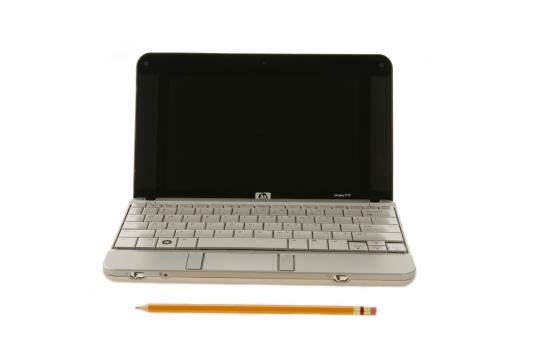
Further, the size of the screen keeps text or images at its native 1,280-by-768 resolution from looking unbearably tiny. "Frameless" refers to the glossy coating on the screen that extends to the screen's borders, making it look like a miniature HDTV, complete with a pair of speakers along the sides. The 8.9-inch screen is bigger and brighter than the Eee PC's 7-inch display. The masterful design is carried over to the interior, where a frameless screen and a wonderful keyboard reside. Although the Mini-Note isn't pocketable like the Fujitsu LifeBook U810, carrying it around the country or the city is still an absolute joy. Not as light as the 2.2-pound ASUS Eee PC 4G, it weighs 2.8 pounds with the three-cell battery and 3.2 pounds with the six-cell battery that my test unit came with. The Mini-Note is about as well made as the HTC Shift but costs only half as much. It makes this tiny laptop look like a darker, miniature Apple MacBook Pro. The anodized aluminum that HP draped all over the exterior is absolutely gorgeous. The Mini-Note is designed to look like a $2,000 machine. My configuration was relatively expensive others start as low as $499-a price that HP had to nail down in order for the Mini-Note to fly. Even more compelling, however, is that this miniature device can be used by kindergarteners or top-level executives alike, and is affordable to most families with schoolchildren. It sports a sexy, 3-pound design, has features similar to the Eee PC, and offers a variety of operating systems to choose from.

The HP 2133 Mini-Note PC ($749 direct) has the potential to be just that. Now, manufacturers are mobilizing to create an Eee PC "killer," so to speak. The Eee PC is a sleek, 2.2-pound ultraportable that costs less than $400-something the UMPC platform had promised but failed to deliver. It didn't take long for PC makers to realize the gold mine ASUS struck with its Eee PC 4G.
#HP MININOTE SOFTWARE#
Best Hosted Endpoint Protection and Security Software.


 0 kommentar(er)
0 kommentar(er)
